To demonstrate the benefits of the data we can gather through pump testing, the client’s Station S was a good case in point. Renamed for this article, Station S has two small-duty and three medium-duty fixed speed pumps, plus two large-duty variable speed pumps. This mix of pumps was typical across the client’s assets.
We tested the pumps using a thermodynamic measurement technique (ISO 5198), utilising our FREEFLOW portable pump testing technology.
Alongside our recommendations, the data we gathered is helping to drive operational improvements, guide strategic refurbishments and make savings.
Operational improvements
Across the seven pumps at the Station S, we found:
- Serious problems due to pumps being oversized in relation to actual requirements
- Low efficiencies – greatest shortfall measured 26%
- Pumps significantly short of best efficiency point
- Average duty flow for system reduced as a whole, or pumps oversized for job when selected
Taking all of our available test data, we identified the availability of significant energy savings via more appropriate rescheduling of the pumps, which we continue to support our client with.
Strategic refurbishments
Pumps showed significant signs of wear, resulting in reduced efficiencies. Pump efficiency was not as it should be had pumps been new or recently refurbished. In the case of the station’s larger pumps, pump efficiency decreased more quickly than the manufacturer’s expected performance, something that can be caused by a worn impeller and casing and/or poorer suction pressure conditions.
In relation to one variable speed pump, we found its maximum overall efficiency to be considerably lower than the manufacturer’s expected efficiency and analysed whether fluid couplings were significantly compromising efficiency when in use.
Along with our on-going work to refine pumping schedules, we’re working with the client to define a refurbishment strategy for the medium to long term.
Savings
- We were able to identify maximum possible savings in the region of 190million (South Korean Won) per year for three pumps as a whole at Station S (around £111k).
- Maximum expected capital expenditure potential for these pumps would be around 597million (South Korean Won), assuming a 3-year payback period (£346k).
- While the above savings would be achievable, we recommended that further analysis be carried out.
Get the case study in full:
The above has been taken from a fuller case study, which you can request by clicking the following link: Major pump tests across many stations.




